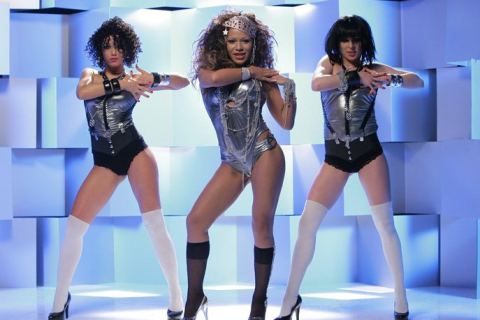Role Singer-songwriter Record label Lavina Music | Name Gaita-Lurdes Essami | |
 | ||
Albums O tebe, Be My Guest, Voodooman, Tol'ko segodnya, Viva, Єvropa!, Samii luchshii, Slіdom za toboyu, Kapli dozhdya Parents Tatyana Essami, Klaver Essami Genres Pop music, Dance-pop, Contemporary R&B Similar People Acoustic Collabo, Joywave, Cutting Crew, Da Buzz, Brandon Beal Profiles | ||
2012 ukraine eurovision winner gaitana faces criticism over her not being ukrainian enough
Gaitana, also known as Guaitipan, is referred to as La Gaitana and Cacica Gaitana, was a 16th-century Yalcon woman from the region of Timaná, Huila, a leader who, in 1539–40, led the indigenous people of the Upper Magdalena River Valley in Colombia in armed resistance against the colonization by the Spanish. Her monument sculpted by Rodrigo Arenas stands in Neiva, the capital of the Huila Department in Colombia.
Contents
- 2012 ukraine eurovision winner gaitana faces criticism over her not being ukrainian enough
- Gaitana be my guest hq sound
- Pre Colombian era
- Pedro de Aasco
- Revenge
- Betrayal
- References

Gaitana be my guest hq sound
Pre-Colombian era

According to Spanish chronologists, at the time of conquest, the modern territory of Huila Department was inhabited by many different indigenous peoples. The Yalcón (with nearly 6,000 warriors), the Avirama, the Pinao, the Guanaca, and the Paez lived north of the Magdalena River, with later concentrations around the La Plata River. South of the Magdalena River lived the Andaquí and Timaná and to the east lived the Pijao.
Pedro de Añasco
Pedro de Añasco was a Spanish conquistador, sent by Sebastián de Belalcázar to found a village in the territory of what is today Timaná, in order to create a trade route through the Magdalena Valley.
De Añasco called all the indigenous leaders and demanded them to pay him a tribute. A tribe of Yalcón people, commanded by a young man and his mother (cacica Gaitana) delayed the payment, and De Añasco decided to set an example by ordering her son to be burned alive.
Revenge
The execution of Gaitana's son caused outrage among the indigenous tribes, who decided to cooperate with each other to join forces against the Spaniards. Añasco and his men were attacked by surprise. The men were executed and Añasco had his eyes removed and was dragged around the village until he died.
Betrayal
However, one of the indigenous leaders, Cacique Matambo, betrayed the organized indigenous forces. Matambo warned the Spaniards about plans against them with the result that the indigenous forces were crushed and the remaining indigenous people were gradually exterminated by slavery, smallpox and other European diseases.
